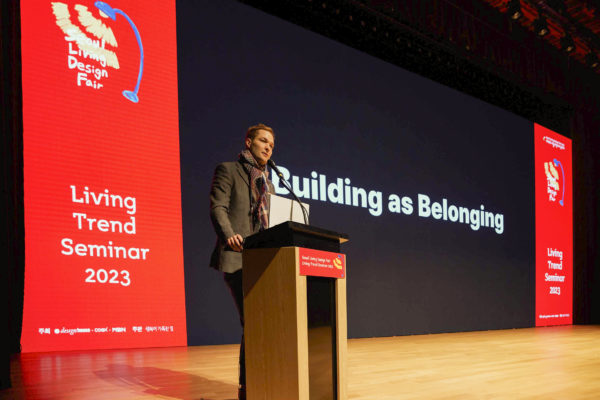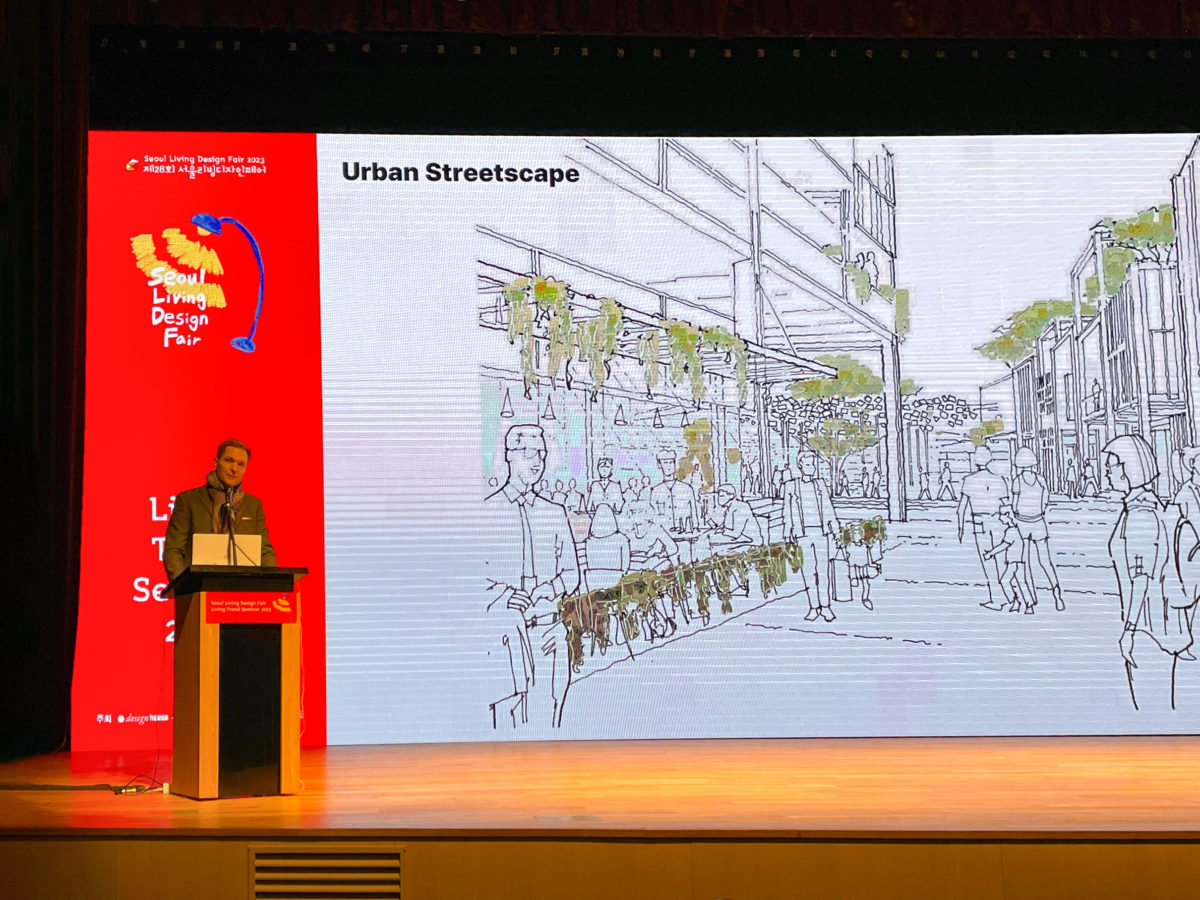The Living Design Fair was held from 22 – 26 February at COEX in Seoul, Korea. The event was a gathering of the regional architecture and designer community to discuss, network and share insights on the future of the global living design industry.
Gregory Kovacs, Design Director, was invited to the ‘Living Trend Seminar’ on the 23rd February as a keynote speaker. In his presentation “The Architecture of Not Building”, Gregory spoke about the importance of sustainable design practices in reusing existing buildings.
Gregory emphasised the need for sustainable architecture in today’s world and how repositioning existing buildings can serve clients’ commercial purposes without the need to rebuild the entire structure. He discussed the integration of design and technology in sustainable architecture, highlighting their potential to provide substantial value to the environment and achieve sustainable decarbonization goals.
Shedding light on Benoy’s tenets in design to demonstrate ideas of environmental sustainability and innovative localism, Gregory explained how existing assets must be repositioned to suit the specific urban fabric of their neighbourhood, including social, cultural, economic, commercial, environmental, mental & physical aspects.
To illustrate this, Gregory shared a streetscape study conducted in a neighbourhood with a uniform grid of buildings. He showed how they design a new façade design by utilising digital analysis, such as simulating daily pedestrian on-site and solar radiation analysis. Starting from the idea of placemaking and social sustainability, they used all the specificities of every single location to revitalise the neighbourhood successfully.
Gregory said, “If 80% of the buildings you will find in 2050 is already built today, what does it mean for us? It gives us a great mandate to shift our focus from new construction towards adapting that vast existing building stock: Improve their environmental performance; integrate them better into their social, cultural contexts; contribute more towards their local communities; rethink their commercial models with a long term financially sustainable vision.
Practically, turning these aging assets into something that feels completely new, yet without altering the built structure. Hence retaining the massive amount of embodied carbon within the structure. While these projects come with some of the most challenging constraints, these are often the most creative and innovative projects in our studios. This is a topic I am very passionate about and I believe will become ever more important in the coming years.”
Organised by Design House, the Seoul Living Design Fair attracts more than 100,000 visitors annually. The seminar aims to establish the highest standard for VIP marketing, reinforce the competitiveness of Korea’s interior industry and enhance consumers’ appreciation for the industry’s initiative. We look forward to more sustainability and innovation exchanges for years to come.





